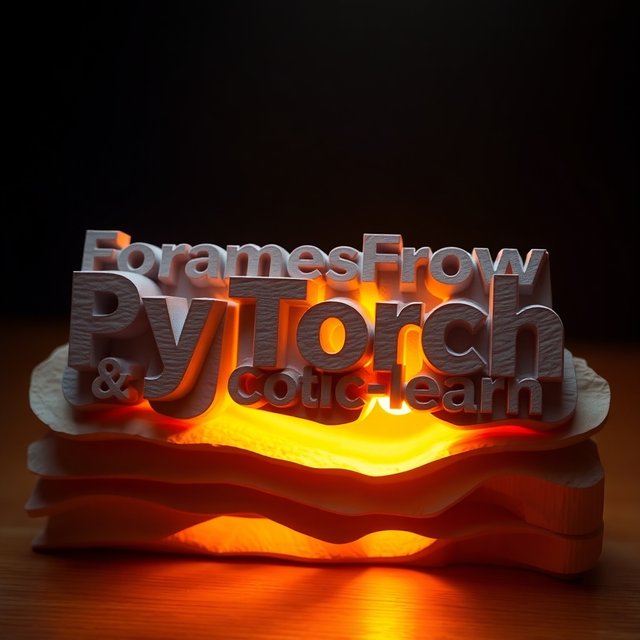
Video Source: Youtube
In the world of machine learning (ML) and artificial intelligence (AI), choosing the right tools can determine the success of a project. Among the most popular options are TensorFlow, PyTorch, and Scikit-learn. Each of these libraries offers a unique approach and is used in different contexts, depending on the project’s needs. Let’s explore these three essential tools and understand where and how to use them. 🧠💡
- TensorFlow 🤖
What is it?
TensorFlow is an open-source machine learning library developed by Google. Originally designed for deep neural networks, TensorFlow is now a comprehensive platform for developing machine learning and AI models.
Key Features:
- Scalability 📈: Ideal for complex models and large datasets.
- Production Support 🏭: Facilitating large-scale model deployment, TensorFlow offers tools like TensorFlow Serving to deploy models in production.
- Cross-Platform Compatibility 💻📱: It can run on CPUs, GPUs, and even mobile and embedded devices.
- Integrated Keras 🧩: Keras, a high-level neural networks API, is integrated into TensorFlow, simplifying the creation of complex neural networks.
When to Use?
TensorFlow is an excellent choice for projects requiring high scalability, such as recommendation systems, computer vision, and large-scale natural language processing (NLP). It’s also ideal when you need a platform that supports both training and deploying ML models in production environments. 🏗️
- PyTorch 🔥
What is it?
PyTorch is a machine learning library developed by Facebook. It has gained immense popularity, especially among AI researchers and developers, for its flexibility and ease of use.
Key Features:
- Dynamic Computational Graphs 🎨: PyTorch uses dynamic computational graphs (known as "define-by-run"), allowing greater flexibility and easy debugging during training.
- Performance ⚡: Like TensorFlow, PyTorch supports GPUs and is optimized for deep neural networks.
- Active Community 👥: PyTorch’s community has grown significantly, making it one of the most well-documented frameworks with extensive online support.
When to Use?
PyTorch is widely popular in research environments due to its flexibility and ease of use, enabling researchers to experiment with different network architectures. It’s particularly useful for rapid prototyping, deep learning, convolutional neural networks (CNNs), and recurrent neural networks (RNNs). 🧪🔬
- Scikit-learn 🌱
What is it?
Scikit-learn is an open-source Python machine learning library that offers a wide range of algorithms and tools for tasks like classification, regression, clustering, and dimensionality reduction.
Key Features:
- Simplicity and Ease of Use 🛠️: Scikit-learn’s API is intuitive and easy to grasp, making it perfect for beginners in machine learning.
- Traditional ML Library 📊: Unlike TensorFlow and PyTorch, Scikit-learn focuses on classical ML models like Support Vector Machines (SVM), decision trees, k-NN (k-nearest neighbors), and logistic regression.
- Data Preprocessing 🧹: Provides various tools for handling data, such as normalization, encoding, and dataset splitting.
When to Use?
Scikit-learn is ideal for projects that don’t involve deep neural networks and where traditional machine learning methods suffice. It’s widely used for tasks like data analysis, data mining, and text classification, and is also a great starting point for those new to machine learning. 🎓📝
Conclusion 🎯
Each of these libraries has its place in the machine learning ecosystem. TensorFlow and PyTorch are preferred for deep neural networks and large-scale projects, while Scikit-learn is the go-to choice for beginners and those needing traditional ML methods.
The choice between these libraries will depend on your project’s specific requirements, your expertise, and your production needs. If you’re building quick prototypes and prefer a more flexible approach, PyTorch might be the way to go. 🚀 If scalability and production deployment are priorities, TensorFlow is an excellent option. 🏗️ For traditional machine learning tasks, Scikit-learn may be more than enough. 🌟
With an understanding of these libraries and frameworks, you’ll be better equipped to choose the best tool for your next AI project! 🚀🧠
!uvf_info
Downvoting a post can decrease pending rewards and make it less visible. Common reasons:
Submit
UVF Info.
Sponsor Balance:68.000000
Sponsored Balance:37.000000
UVF Total:105.000000
Next upvote Balance:0.002350
How to earn UVF in addition to the conventional way?
1.Enter the Boylikegirl Club Weekly Contest(Community tag:hive-150487)
2.Participate in the daily lucky number event(@boylikegirl)
3.Redeem with Boylikegirl club DAPP points(https://boylikegirl.club)
4.Steemit Daily Jackpot(@httr4life)
5.Writing Contest(@hive-169911)
Downvoting a post can decrease pending rewards and make it less visible. Common reasons:
Submit